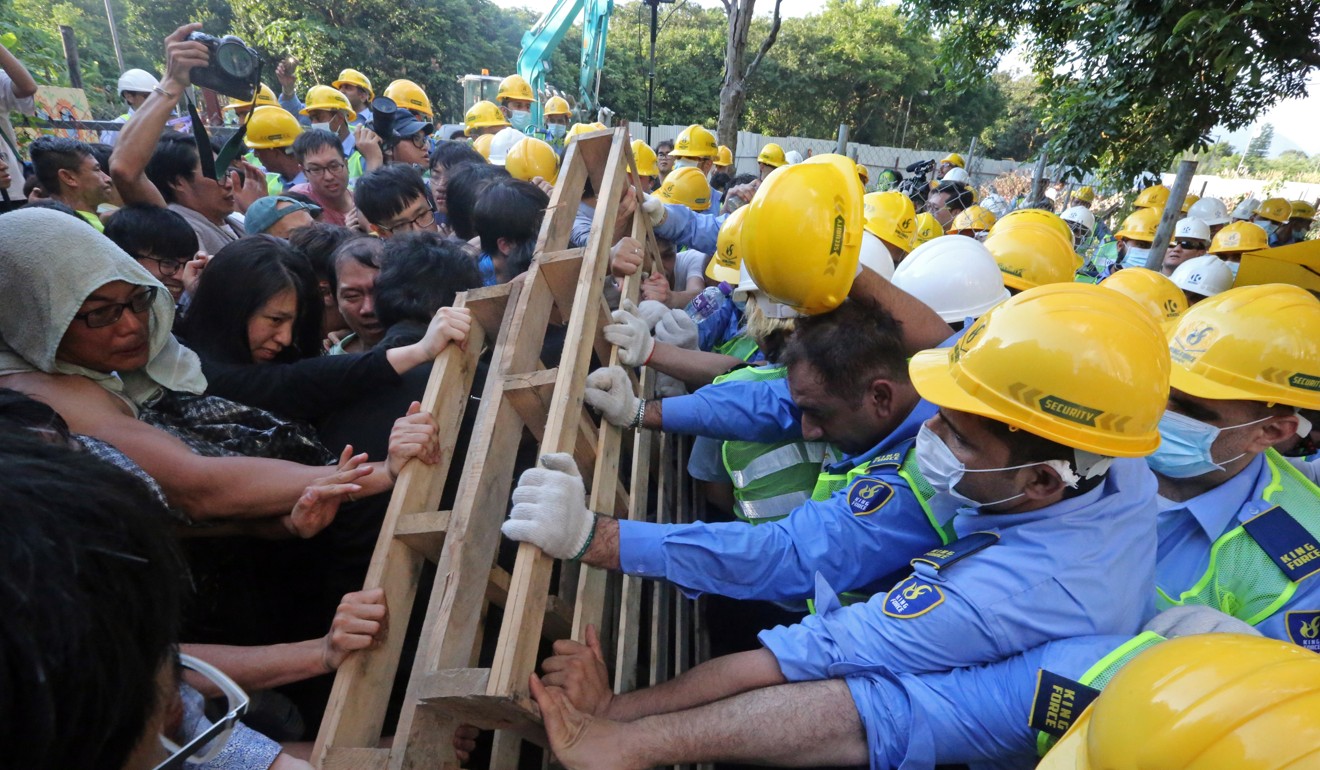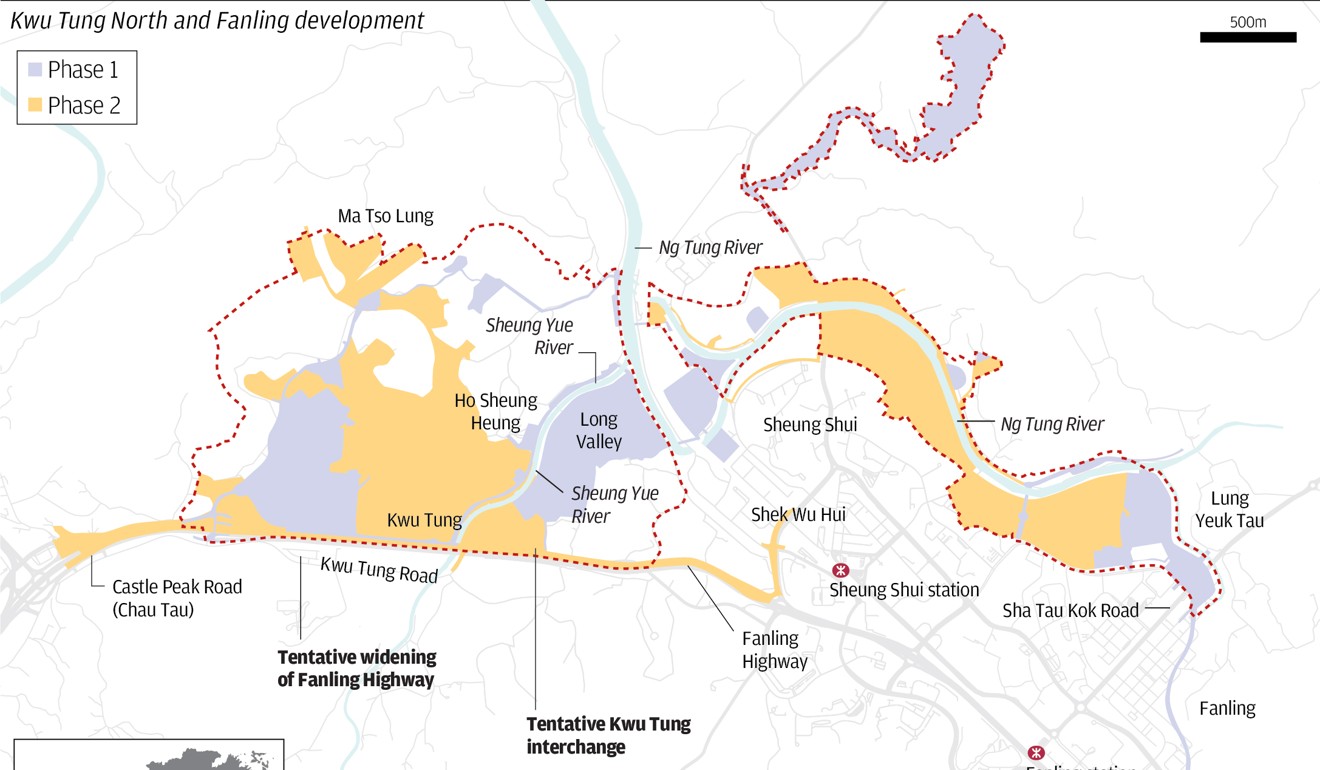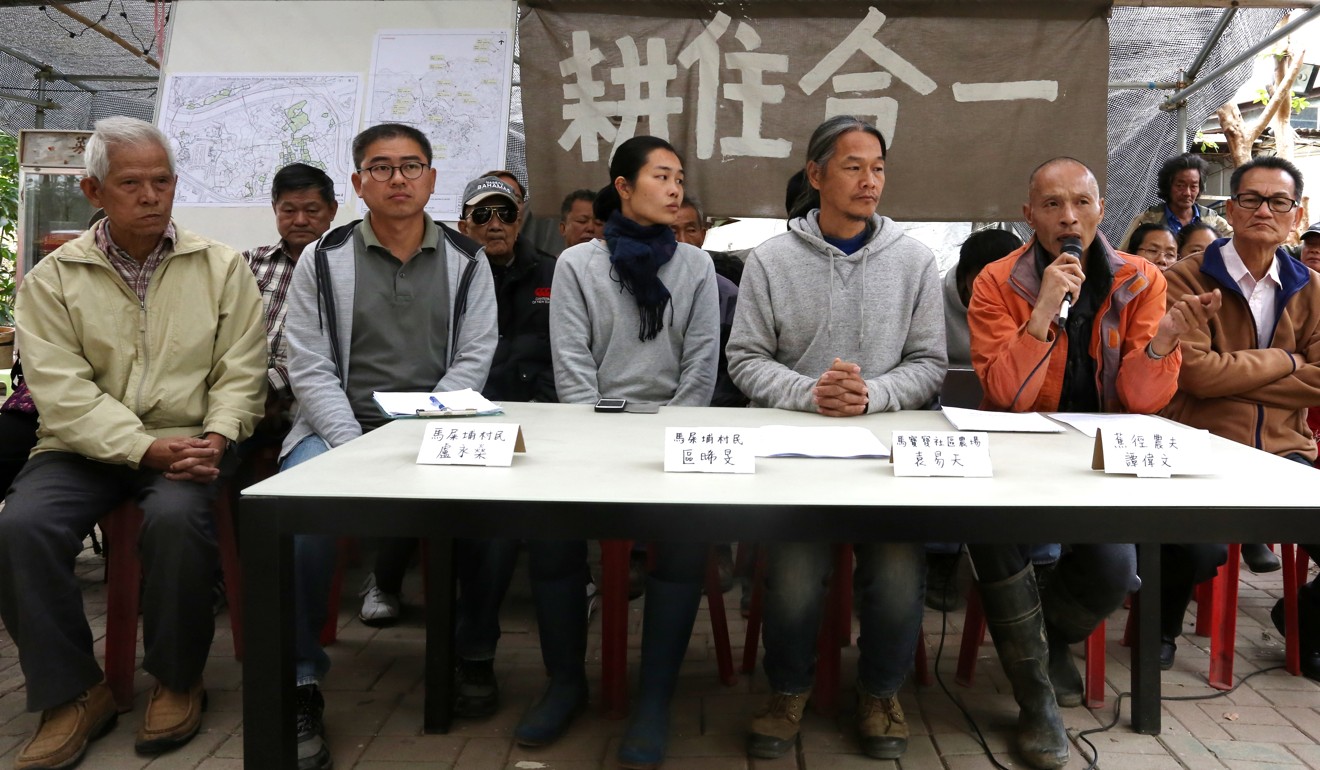
Fanling North and Kwu Tung North development plan is ‘killing family farms’ in Hong Kong, affected residents say
- Officials have offered 18 relocation sites that are all ‘either too far away, too small or on hills with a wild boar threat’
- Full-time farmers need to live near their produce to make living, says Yuen Yat-tien of Mapopo Community Farm
A plan to develop two new towns in northern Hong Kong is killing family farming by not providing adequate relocation sites, affected residents said on Monday.
Despite an enhanced compensation policy, 30 families in Ma Shi Po village in Fanling said the government had not offered a suitable relocation plan. The village will be affected by the first phase of the development.
Yuen Yat-tien, a member of the Mapopo Community Farm and representative of the 30 families, said officials had offered 18 relocation sites, all of which were either too far away, too small or on hills with a wild boar threat.

Yuen said the government had also rejected a request to build squatter homes on the farmland after relocation, making it impossible for full-time farmers, who need to live near their produce, to make a living.
“Farming and living should be one or the government is killing family-style farming in Hong Kong,” Yuen said.
The government stopped allowing squatter homes to be built on agricultural land in 1982. A licence scheme used to regulate squatter homes was halted in the mid-1970s.

Yuen said farmers needed to tend their crops for most of the day, harvest in the early morning and move produce home to be cleaned and checked.
He accused the government of trying to “eliminate squatter homes” while showing no intention of changing a policy that allows indigenous villagers to build small houses on vast areas of farmland in the New Territories.

The new towns are slated to offer 21,000 flats when the first phase is completed in 2026. The entire development will produce 71,800 flats – 70 per cent of which are marked for public housing – and accommodate about 190,000 residents by 2031. The first phase is estimated to cost HK$47 billion.
Part of the compensation package was approved last year and a funding request for HK$33.6 billion will be made to the Legislative Council in the first half of this year, followed by land clearance and construction work in the second half.

Under the compensation system, residents may qualify for subsidised housing or be able to claim a lump sum.
Those who have lived in a licensed squatter home for at least seven years will not be subject to a means test when applying for subsidised flats – currently they must meet income and asset limits.
Those who accept the compensation package will only have to prove they had lived in their home for two years continuously, instead of 10. The maximum amount offered to them will double from HK$600,000 to HK$1.2 million.

